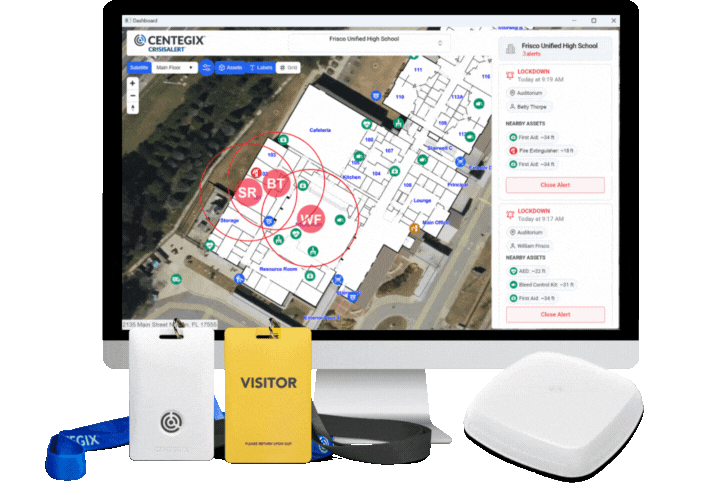Workplace violence has been steadily on the rise over the past few years. According to a 2019 survey of HR professionals, 48% reported that staff members and employees in their organizations experience or report at least one incident of workplace violence at their organization. These instances can have costly, time-consuming consequences.
Workplace Violence: A Losing Game
On average, American businesses lose between $250 and $330 billion every year because of workplace violence. Furthermore, because a significant number of workplace violence cases go unreported every year, the actual cost of these incidents could be even more. Considering there are 2 million victims of workplace violence every year, developing prevention strategies for your business is essential. If your organization experiences an incident of workplace violence, you’ll want to know right away what caused the incident to happen. Yet, this is a difficult task that may be hard to pin down right away. The revenue organizations lose on workplace violence annually results from a variety of factors:
- Decreased worker productivity due to illness and injuries
- High employee turnover
- A high number of employee absences
- Lawsuit fees
- Customer loss because of a damaged business reputation
Workplace violence has many forms, making it important for your staff to stay up to date on how to recognize and report unsafe situations. Customer-facing occupations that primarily interact with the public are most at risk for experiencing workplace violence. Because of this, workplace violence in healthcare faces its own set of unique challenges. A thoughtful and effective hospital safety plan can prevent potentially violent incidents from occurring in your facility.
Getting Ahead of Immediate and Long-Term Consequences of Workplace Violence in Healthcare

Violence in healthcare
While rates of violence have been increasing for nearly a decade, the COVID-19 pandemic has exacerbated workplace violence in healthcare over the past few years. As such, hospitals and healthcare facilities across the country have begun to notice both immediate and long-term consequences. These consequences impact all levels, from administrative tasks to the staff’s ability to provide care to patient satisfaction. Immediate consequences of workplace violence in healthcare include:
- Tying up resources that delay urgent care for patients in need
- Failure to provide care that leads to reduced patient satisfaction and feelings of neglect
- Increased need for workers’ compensation funding and paid time off
As a result of these consequences, the American Hospital Association has called for Congress to enact the Safety from Violence for Health Employees (SAVE) Act. If passed, the SAVE Act would institute a federal law that protects healthcare workers from forms of workplace violence, including assault or intimidation. Not only can hospitals face immediate consequences of workplace violence, but they may also face problems in the long run:
- Loss of money in settlements with patients, employees (previous or current), and/or other individuals, as well as fines from the Joint Commission or OSHA
- High employee turnover and poor retention rates
- Increased employee absenteeism, costing hospitals $53.7 million every year
Long-term consequences of violence in the workplace can often be measured against annual objectives and goals, making it easier for hospitals to identify problem areas and adjust their deliverables accordingly. A successful safety plan improves the staff’s ability to report and resolve violent incidents and creates a clear channel of communication for support during a violent incident. Thus, with an effective safety plan in place, hospitals can avoid the potential immediate and long-term consequences of workplace violence.
How Prevention Data Benefits Hospitals
While the consequences of workplace violence in healthcare are worrisome, they can be mitigated with the help of prevention data. New developments in data analytics show promising effects on preventing, anticipating, and responding to violence in the workplace. Traditional data collection strategies take a reactive approach, only tracking incidents after they happen. This makes it tricky to evaluate how to prevent the violent incident from occurring in the first place. By collecting data on workplace violence and following historical trends, it’s possible to be better prepared for potential threats. Conflict resolution training is highly beneficial to staff, who can find themselves in an abusive situation at a moment’s notice. This training complements a robust security system. De-escalation techniques are a central component of an effective hospital safety plan and include:
- Acknowledging the concerns expressed by the people involved
- Establishing clear guidelines for the conversation
- Staying unbiased and neutral in the situation
- Acting and communicating decisively, so each person feels supported
Conflict resolution training complements a robust, technologically advanced hospital security system. When combined, these two approaches work to mitigate and, hopefully, prevent workplace violence in healthcare.
CENTEGIX Addresses and Prepares Hospitals for Workplace Violence

Violence in healthcare
Workplace violence has many forms, making it important that your staff stays aware of how to respond to unsafe situations. That’s where we step in. Securing your workplace should be a top priority when considering how to effectively prevent and/or resolve violent incidents as they occur. The CENTEGIX CrisisAlert badge is a wearable emergency button that empowers healthcare workers to immediately call for help in a crisis. This mobile panic button is equipped with features that make your hospital safer:
- One-button activation that discreetly and immediately calls first responders for help
- Location accuracy that delivers floor- and room-level information, with 100% coverage of the facility or campus
- Immediate audio and visual notification of emergency information
- Easy installation without alterations to physical structures or systems
Our CrisisAlert badge also boasts a robust reporting dashboard that helps healthcare leaders make well-informed decisions to protect their staff and improve the quality of care for patients. All hospital administrators want to make their workplace as safe as possible for staff and patients. Incorporating thoughtful security solutions can help your employees feel supported, especially during emergencies. We know how workplace violence in healthcare can jeopardize the efficiency of hospitals at all levels of care. As part of your hospital safety plan, our CrisisAlert solution allows healthcare professionals to focus on what is most important: providing high-quality care for those who need it.










